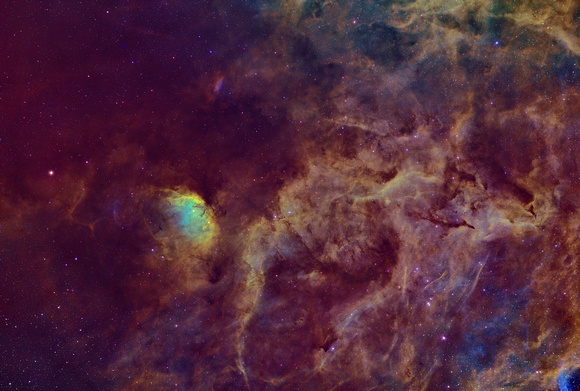Data Recovery and Redemption - Wide View Tulip Nebula in SHO
Data Recovery and Redemption – Wide View Tulip Nebula (Sh2-101) in SHO
Teleview 127is; AP Mach2 GTO
ASI6200MM, - Baader RGB & 6.5nm NB CMOS opt. filters
H,O,S: (30,25,29 x 600s, Bin 1, Gain 100)
R,G,B: (15,12,12 x 180s Bin 1, Gain 100)
Total integration time = 15.9 hrs
So what does one do with the data collected, that is faultly either due to nature or due to my ignorance, laziness, or forgetfulness. I have decided to create a series where I have used the flawed data anyways to try and create images that have one or more redeeming qualities that make it worth viewing despite shortcomings. I will attempt to list the shortcomings as I seen them, as well as what I believe redeems the images.
Downfall:
The star shapes on the edges and corners of this image are horrendously shaped. I spent a while fiddling with backfocus associated with the wide field corrector that was needed to allow the use of my full frame camera on my Teleview 127is.
Redemption:
Unlike my previous attempts at the Tulip nebula (Cygnus), this wide view, narrowband image really displays a nice palette. Of particular interest to me, is the X-ray bow/shock front, to the left of the Tulip nebula that is created by the Cygnus X 1 star displacing material against the interstellar medium, and dimly lighting it up in [OIII] through X-ray ionization. I like the complexity of the molecular cloud on the RHS of the image – complete with elephant trunks, fingers, and filaments.


